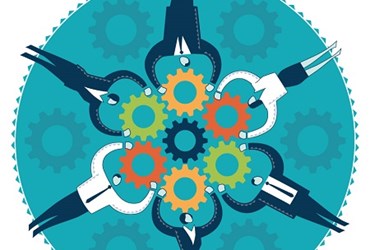New Ways OCR Can Improve Business Processes — And Results

By Jeff Segarra, Senior Director of Product Marketing, Nuance Document Imaging Division
Companies are using creative and innovative optical character recognition (OCR) technologies that integrate with enterprise content management (ECM) and other applications. Whether they’re looking to utilize OCR to better support existing workflows or improve business processes, these companies achieve significant results.
What Is OCR?
OCR stands for “optical character recognition,” which is the mechanical or electronic conversion of text. This text can be typed or handwritten or taken from a scanned document, image, graphic or even a photo. The benefit is the OCR technology quickly and accurately converts text into a format that can be easily edited, stored, searched or used in support of business applications like ECM or workflows.
Uses Cases — And Advantages — For OCR
There is a wide array of OCR use cases. For example, companies often need to convert paper-based estimates and invoices to text so that the underlying data can be used to generate POs, financial reports or be processed as invoice. Normally, these documents come in a variety of document types — Word, Excel, PDF, even images — and in many different formats. This document complexity makes it difficult for employees to manually enter this information into existing systems and often leads to wasted time and effort, and too many mistakes.
Another example is found in paper receipts which can often contain valuable information beyond just the cost of goods and services. Healthcare receipts (doctor visit or medication copays), grocery, shopping and travel , all contain other information, such as date and time, location and purchase trends that can be mined to enhance business intelligence or processes.
In both of these cases, OCR technology can quickly and accurately convert documents into formats that can be easily edited, integrated into business applications including ECM, or searched as employees need this information later. All of this helps save time, increase productivity and empower team members to focus on higher-value initiatives.
Addressing Challenge Of High Document Volumes
One challenge IT faces in managing ECM and other applications is the storage of tens of thousands of documents in a wide variety of formats — Word, Excel, TIF, PDF and many more. Additionally, these documents can published in multiple language and potentially have embedded images, tables and graphics, which further adds to their complexity. Now imagine these documents cannot just be stored, but also must be easily accessible, searchable and editable for all of an organization’s employees, wherever they are located.
Converting and centralizing a handful of documents to a consistent format is one thing, but in many organizations, there are tens of thousands of documents served across the network at the same time, all of them requiring intensive security protection, precision accuracy and the right support to make sure they find their way into the correct workflows and repositories.
This situation is an ideal scenario for OCR technology. Server-based OCR software is typically designed for high-volume processing across large enterprise organizations and can automate scanning and document-conversion processes on a 24/7 schedule. It is adept at handling a wide range of file types, ensuring accurate conversion of information with advanced layout retention technology. This includes conversion to editable formats to accommodate and reproduce complexity within those documents, such as images, tables, graphics, and different languages for organizations operating globally.
Moreover, these solutions work virtually unattended, a benefit that frees IT staff and employees from time-consuming scanning and conversion tasks and enables them to focus on other valuable work. All the while, IT staff can remain confident in their ability to maintain full control over the security and privacy standards that drive business operations.
For organizations that need a better way to scan, convert and store high volumes of paper documents, OCR technology dramatically improves the process, by enabling all files are searchable, editable and in a consistent format.
